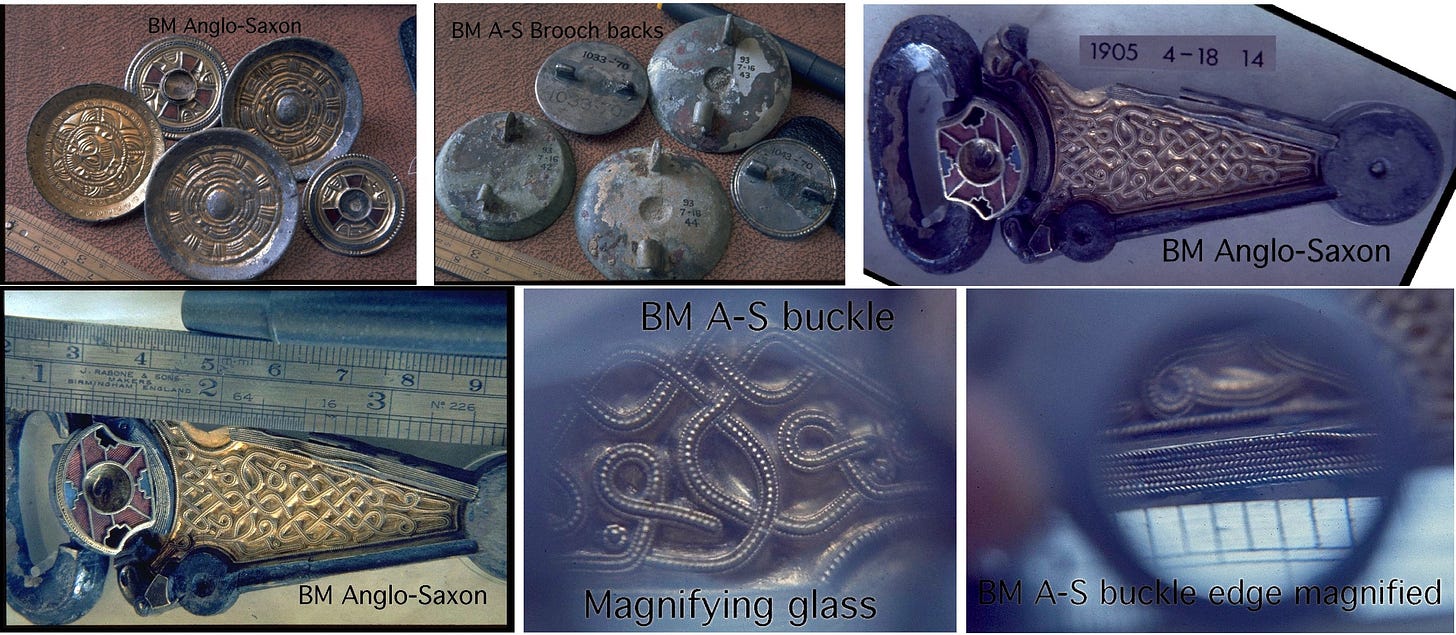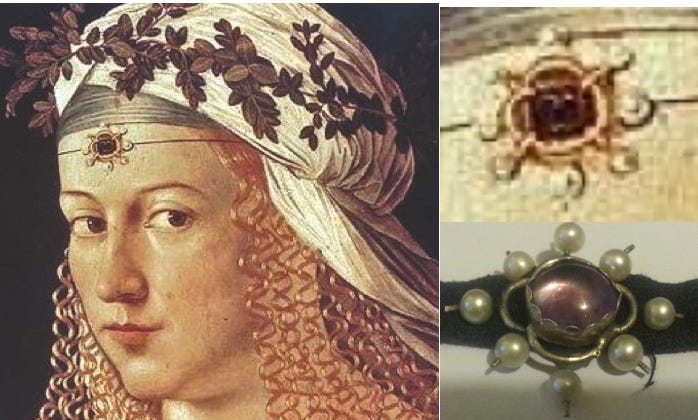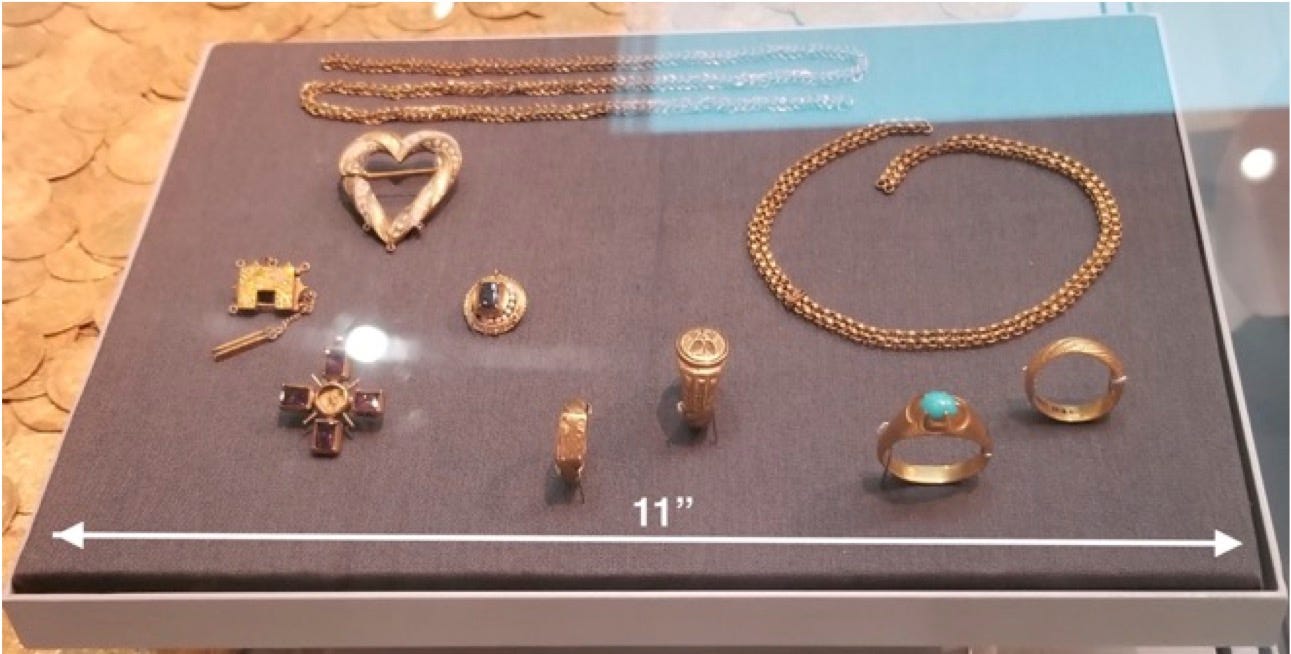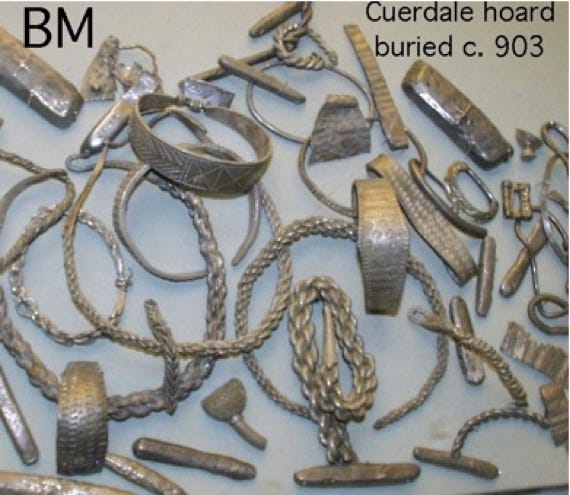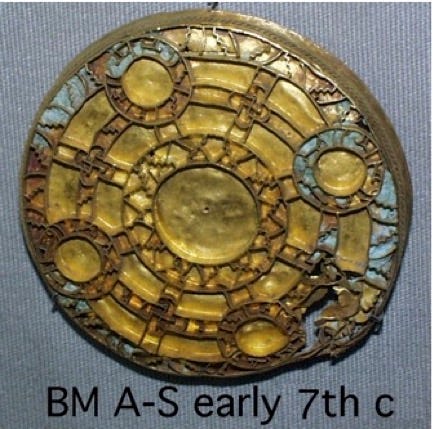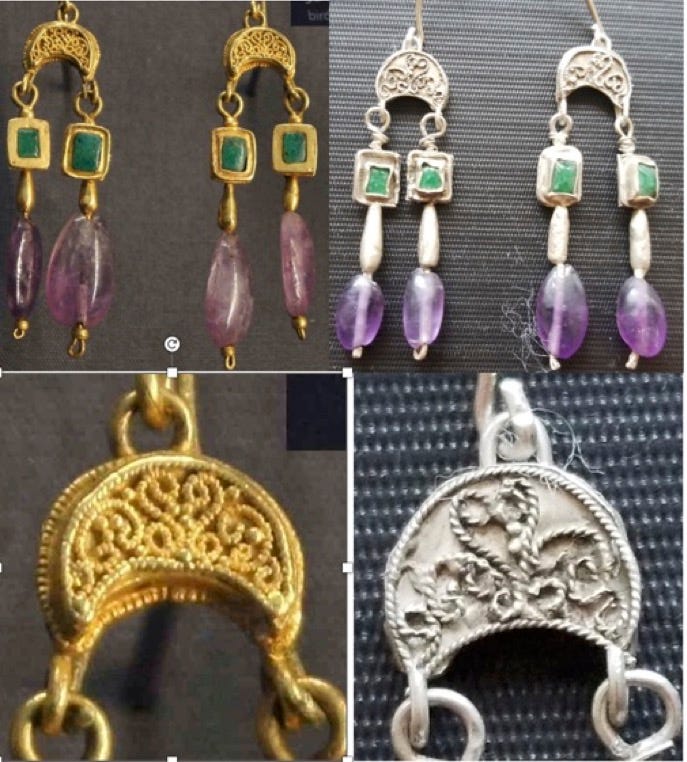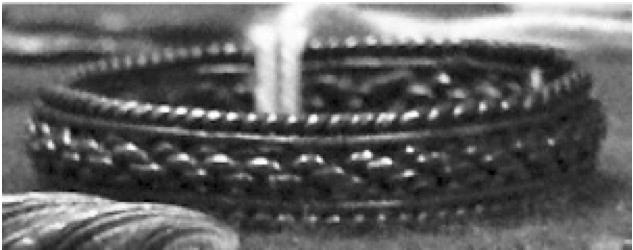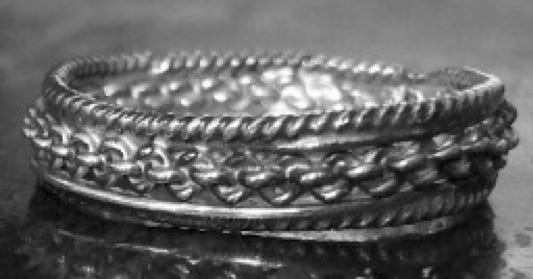One of My Hobbies
One of my long term hobbies is historical recreation, mostly medieval, done in the Society for Creative Anachronism. One of the things I do is to make things, including jewels. In a few weeks I will be spending two weeks living in a medieval pavilion surrounded by ten thousand or so fellow recreators, teaching classes, cooking medieval dishes over a fire, telling poems and stories around a campfire.
One of the classes, a new one, is going to be about how to make jewels based on period originals. This is the text version.
How to Recreate Period Jewels
To recreate a period jewel you need information: what it looks like, what size it is, what materials it is made of, what gemstones, if any, it contains. That done, you have to figure out how to make it. This essay is mostly on the first problem with a few suggestions for the second.
Getting Information
There are at least five ways of getting the relevant information. The best is by examining the jewel you plan to base yours on. It is possible to buy simple period pieces such as the ones in Figure 1. All of those were purchased in London at prices ranging from £23 to £90. Master Gaukler sells simple period jewels at Pennsic and online and there are other online sources, including eBay. Pieces you can buy at a reasonable price are likely to be, like those shown, simple ones made of base metal or perhaps silver — but simple, inexpensive, period pieces are at least as useful in the Society as elaborate expensive pieces, even if less impressive. The double-twist ring shown one in from the right below is the model for the rings I give as tokens to people who camp with us in the Enchanted Ground.
Figure 1: Simple Period Pieces I Own
It is also occasionally possible to get permission to examine pieces in a museum or private collection. Many years ago I sent the British Museum pictures of a piece I had made based on something in their collection and was invited into the museum basement and allowed to examine, measure, and photograph a box of Anglo-Saxon junk jewelry and a broken belt buckle of near Sutton-Hoo quality. That was how I found out what was on the back of Anglo Saxon pins — pictures in books and pieces on display only showed the front. It was also how I discovered that the interlace on the belt buckle was done with a bead wire running about sixty beads to the inch precisely paralleled by two strands running about 130 beads to the inch, almost invisible to the naked eye
Figure 2: In the British Museum
Many museums have now webbed large parts of their collections,1 so a second way of getting information is by looking at museum collections online; often the image will be accompanied by information such as the dimensions of the piece or what gemstones it contains. A third way is by visiting a museum, a fourth by looking at images in books. That has the disadvantage that books mostly show only the most elaborate pieces, difficult and expensive to reproduce and less suited to SCA use than simpler jewels, and do not always have information on dimensions.
The fifth way it to go to a museum, or online, and look at paintings that show the jewels people are wearing. The figures show the painting, the head jewel in the painting, and the one I made based on it
Measuring Museum Pieces
Sometime you can directly measure the piece, or part of it, but if not you can measure and write down the width of the display case, take a picture of the whole case then a closeup of the piece you are interested in. If the case is 11” wide and the ratio of the width of the cross in the lower left corner to the width of the case, measured with a ruler or in a graphics program, is about .085, the width of the cross is 11”x.085 = .94”
Figure 3
Filling in the Blanks
Looking at a picture of a piece online or in a book or seeing and photographing it in a museum may not give you all the information you want. One way of supplementing that is to look at similar pieces that are broken, such as hacksilber in a Norse hoard or an Anglo-Saxon false cloisonné piece with the garnet missing.
.
Another way is by combining the information you get by looking at one piece with additional information from a painting or drawing of a similar piece.
For one example, consider the 15th c. English cross shown in Figures 3 and 4, which I originally found on the website of the British Museum. I was puzzled about the four wires coming out between the arms of the cross until I noticed a similar piece in an Italian painting with pearls where the wires were. Pearls are more fragile than gemstones. The obvious guess is that there had originally been pearls on the wire, so I made it that way
A month or so later I happened to be visiting the British Museum with my wife and adult daughter, who was wearing a copy of the piece that I had made for her. My wife pointed out that the original of the piece she was wearing was in one of the cases in the room we were in.
Looking at it in the museum, I discovered that in addition to five cabochons and four (conjectural) pearls on one side, there was an additional stone in the center of the other side. The cross in the museum was tilted up enough so that I could see the stone was there but not what it was, but when I reread the description accompanying the webbed picture — I had missed the reference to the extra stone — I discovered that it was a ruby.
Now I have to make another one.
Figure 4
Cheating
Sometimes there are things you cannot do. The description of the cross shown above said that the knob on the top was pierced for a chain. I’m not sure I believe it — the whole piece is about an inch across, the knob on top a tenth of an inch — but whether or not the maker could drill a hole for a chain in a sphere that small, I couldn’t. The similar piece in an Italian painting had a loop attached to the top of the knob; that I could, and did, do.
A harder problem is bead wire. Bead wire, very common on early period jewelry, runs up to about 130 beads to the inch. The finest bead wire I can buy from Rio Grande, my usual source for metal and tools, is 25 beads to the inch.
The best solution would be to build the organarium, the device described by Theophilus for making bead wire — I think I have figured out how it works — but I have never done it and neither, so far as I know, has anyone else. When I made a pair of Byzantine earrings based on a pair on the Ashmolean I cheated, used a twist of very fine silver wire to imitate the beads on the original. Seen in a close up you can spot the difference.
A second problem for the earrings was drilling the amethysts. In principle I could have done it with a flexshaft and diamond core drills but it would have been a lot of work. Instead I found amethyst beads on Etsy, drilled but not shaped, and used my lapidary equipment to shape and polish them.
If the museum label is to be believed the green stones are glass; if so, they have held their polish surprisingly well. Mine are emeralds. For another example of improving on the original, a ring also from the Ashmolean that I have several times tried to make is labeled lead alloy. My conjecture is that it was a cheap copy, probably cast, of an original made in silver. I don’t do casting or work with lead so what I tried to make was the (hypothetical) silver original.
Lead Original
Silver copy
Other Sources of Information
In addition to information on the particular piece, you can also get background information to make your reproduction closer. One example is information what gemstones were in use when. A red stone, in a painting or a museum collection, might be garnet or cornelian but almost certainly is not alexandrite, since so far as we know alexandrite was first discovered in the 19th century. An opaque green stone in a 12th century European piece might be chrysoprase but not jade, since jade, as far as we know, was not known in Europe until the Spanish brought it back from the New World.2
Information on period jewelry techniques can be found in period treatises. The two I am familiar with are Theophilus, On Divers Arts, and Cellini Treatise on Goldsmithing and Sculpture. The latter includes a recipe, with quantities, for the mixture used in solderless soldering, the way in which we believe Etruscan granulation, with granules down to 1/300th of an inch, was done. It also includes instructions for making colored foils to put under stones to improve their color. Making them might be an interesting project.
Museums that have done so include the British Museum, the Victoria and Albert, the Metropolitan Museum, the Walters Gallery, the Louvre, the Cluny, The National Museum (archaeology) in Dublin, and the Hermitage. Some but not all provide search engines to help you find pieces in their collection.
What I know about period gemstones is summarized in “Concerning Gemstones,” an article in the Miscellany.


